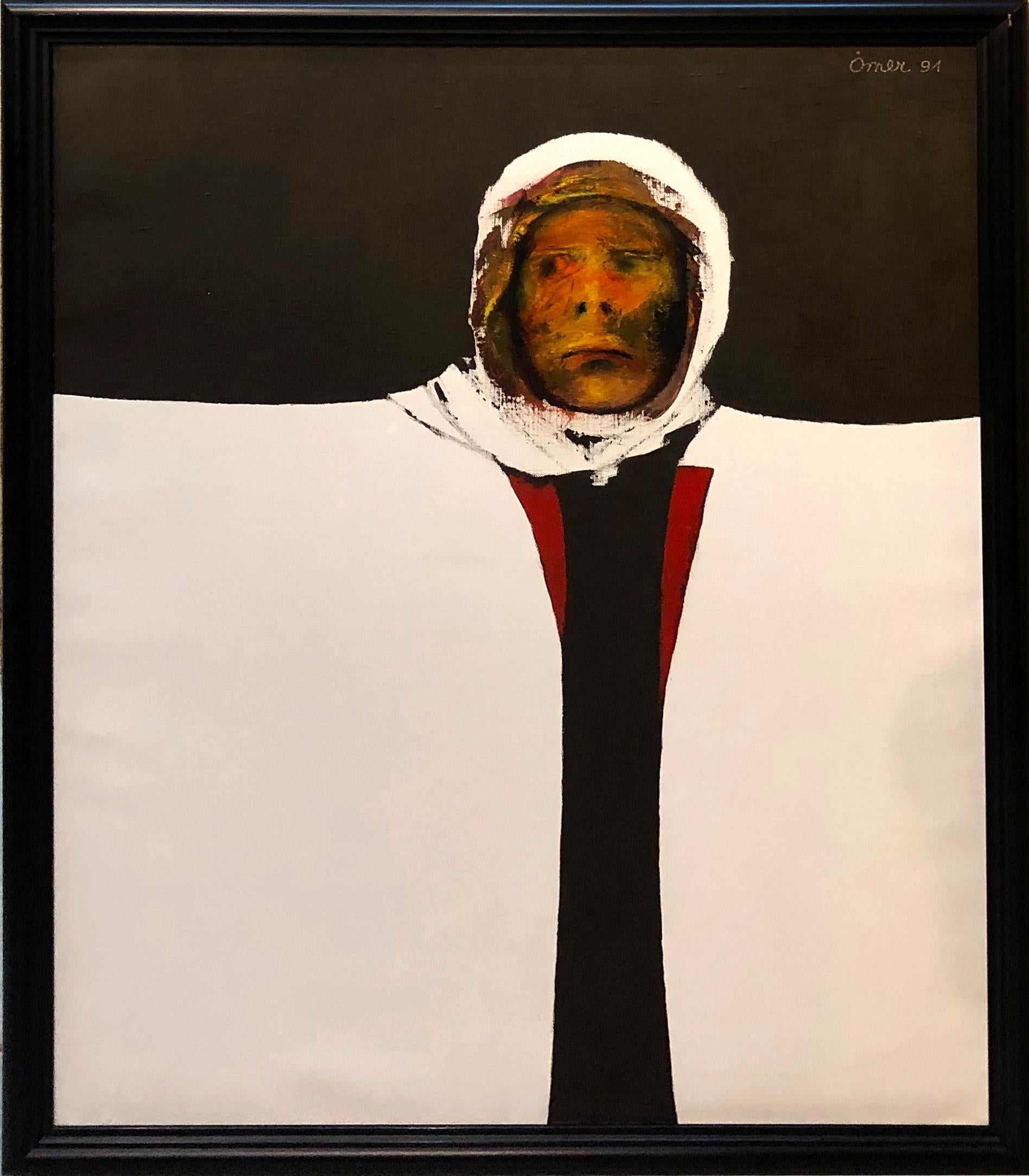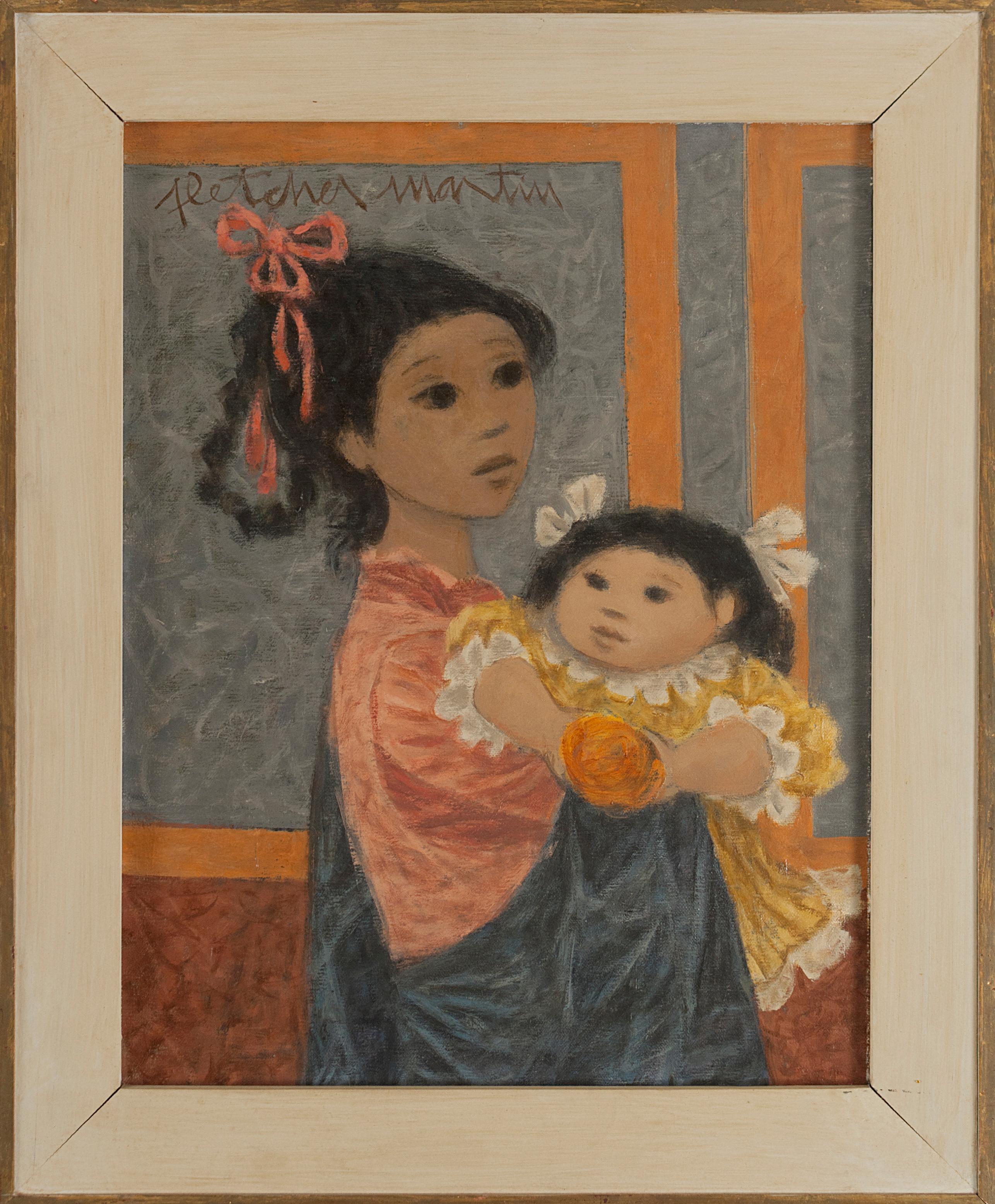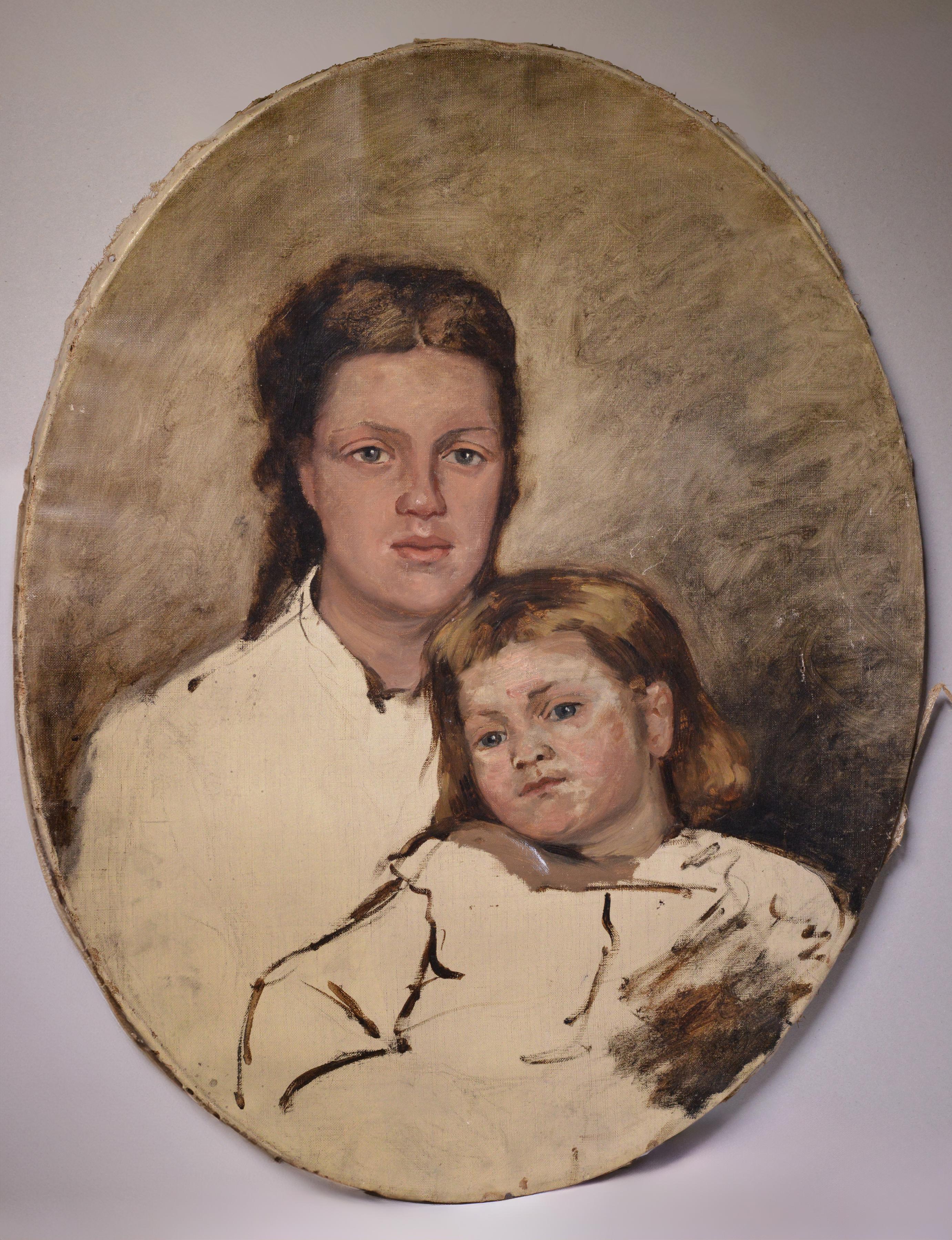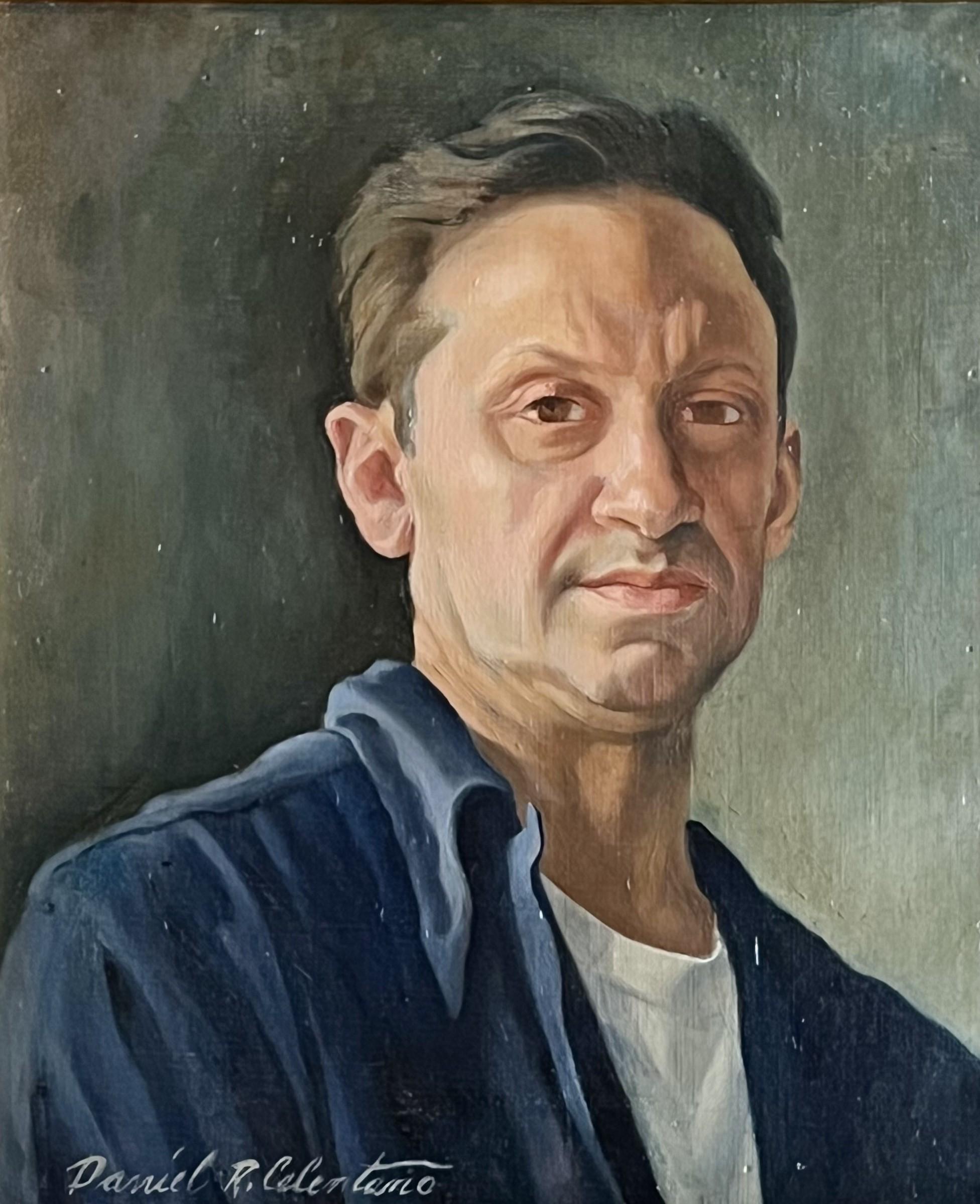Items Similar to 1938 portrait of Marie la Guivinee by Belgian artist Jean van den Eeckhoudt
Want more images or videos?
Request additional images or videos from the seller
1 of 11
Jean van den Eeckhoudt1938 portrait of Marie la Guivinee by Belgian artist Jean van den Eeckhoudt1938
1938
About the Item
A very engaging Post Impressionist portrait painted in 1938 by the Belgian painter Jean Van den Eeckhoudt.
The details of the work are as follows:
Jean Vanden Eeckhoudt (Belgian, 1875 – 1946)
Marie la Guivinee 1938
Oil on canvasboard
Signed with initials ‘J V’ (lower right)
14.1/2 x 10.1/2 in. (36.8 x 26.7 cm.)
£1700
Provenance: from the studio of Jan Vanden Eeckhoudt
Jan Van den Eeckhoudt (known to his friends as ‘Vanden’) was the grandson of the genre painter François Verheyden and nephew of the landscape and portrait painter Isidore Verheyden. It was in his uncle’s studio that, as a youth, he met such artists as Constantin Meunier, Georges Lemmen and Théo van Rysselberghe, who was to become a close friend. Vanden Eeckhoudt’s earliest known work, a still life of crysanthemums, was painted in 1889, when he was just fourteen years old. The following year, on the advice of Meunier, he entered the studio of the painter Ernest Blanc-Garin, where he befriended the young artist Henri Evenepoel. He exhibited his work for the first time in Ghent in 1892, aged seventeen, and the following year had his first solo exhibition at a gallery in Brussels. From 1895 onwards Vanden Eeckhoudt participated in the annual exhibitions of the avant-garde artistic society La Libre Esthétique in Brussels, and in later years also showed at the Salon de Bruxelles and Salon du Cercle Pour l’Art.
In 1904 Vanden Eeckhoudt first visited the South of France, which was to have a profound effect on his art. Until the 1920s he would divide his year between stays in the South of France, mainly in Menton and Roquebrune, in the winter months, and return trips to Brussels in the summer. He came to be known for his richly coloured Mediterranean landscapes, and developed a friendship with Henri Matisse. Vanden Eeckhoudt’s early work in an Impressionist and Post-Impressionist manner was succeeded, around 1913, by a style more indebted to Fauvism, which in turn lasted until about 1920. However, much of his work of these years was lost in 1925 when, suffering from depression, he destroyed around six hundred of his early paintings, and left Brussels to settle permanently in Roquebrune, where he built a villa, named La Couala.
Despite living and working in France for over thirty years, Vanden Eeckhoudt only had one exhibition of his work in Paris, in 1922, and indeed only infrequently exhibited in Brussels. A somewhat morose character, he rarely socialized with other artists or visited exhibitions, and, although fond of music, almost never went to concerts or the theatre. In 1937 he returned to Belgium, having lost the sight in one eye due to cataracts. Although he was beginning to lose his vision in the other eye, he continued to paint portraits and still life subjects into his old age, sometimes exhibiting his work alongside that of his daughter, Julienne (known as ‘Zoum’) Walter, who was a gifted painter and pastellist. Within a few weeks of Vanden Eeckhoudt’s death in 1946, a retrospective exhibition of his work was held at the Galerie Giroux in Brussels.
- Creator:Jean van den Eeckhoudt (1875 - 1946, Belgian)
- Creation Year:1938
- Dimensions:Height: 14.5 in (36.83 cm)Width: 10.5 in (26.67 cm)Depth: 1 in (2.54 cm)
- Medium:
- Movement & Style:
- Period:
- Condition:Oil on canvasboard, paint surface in good order, surface dirt, recently presented in a hand finished art deco stepped frame in silver. Overall good condition.
- Gallery Location:Petworth, GB
- Reference Number:1stDibs: LU540312723082
About the Seller
4.9
Platinum Seller
These expertly vetted sellers are 1stDibs' most experienced sellers and are rated highest by our customers.
Established in 2010
1stDibs seller since 2017
226 sales on 1stDibs
Typical response time: 2 hours
- ShippingRetrieving quote...Ships From: Petworth, United Kingdom
- Return PolicyA return for this item may be initiated within 10 days of delivery.
More From This SellerView All
- Mid-century, Modern British portrait of a lady in pale pink hat by Ewart JohnsLocated in Petworth, West SussexAn elegant and intimate portrait of a young lady in a pale pink hat gazes out beyond the frame. She wears a simple white summer dress and a beaded necklace around her neck. Rich stri...Category
20th Century Modern Portrait Paintings
MaterialsOil, Canvas
- 16th Century Spanish portrait of Saint Fermin of PamplonaLocated in Petworth, West SussexSpanish School (16th century) Saint Fermin of Pamplona oil on canvas 40.1/8 x 32.½ in. (102 x 82.5 cm.) Condition: oil on canvas re-lined. Extensive surface dirt and varnish discolouration, craquelure throughout, possible stretcher bar marks. Probable retouches in a 17th century wood frame with painted decoration to corners and central spans. The frame has abrasions and knocks but suits the painting well. There is some shrinkage to some of the paint on the frame. Following some detailed research, we are confident this is a portrait of San Fermin...Category
16th Century Old Masters Portrait Paintings
MaterialsCanvas, Oil
- British early 20th Century expressionist portrait of a lady by Frank BramleyLocated in Petworth, West SussexFrank Bramley RA (British, 1857 – 1915) Portrait of an elegant lady Signed and dated ‘FRANK BRAMLEY / 11’ Oil on canvas 21 x 15.1/2 in. (53.4 x 37.2 cm.)Category
Early 20th Century Expressionist Portrait Paintings
MaterialsCanvas, Oil
- Post Impressionist portrait of Anne Marie by Belgian artist Van OverstraetenLocated in Petworth, West SussexWar Van Overstraeten (Belgian, 1891 – 1981) Anne Marie Oil on canvas Signed ‘W. van Overstraeten’ (upper right), and inscribed ‘Anne Marie 1939’ (on the stretcher) 24 x 20 in. (60.5 ...Category
20th Century Post-Impressionist Portrait Paintings
MaterialsCanvas, Oil
- French Post Impressionist portrait of artist Miquel Utrillo, circa 1907Located in Petworth, West SussexEtienne Morillon (French, 1884 – 1949) Portrait of Miquel Utrillo Oil on canvas Atelier stamp of Etienne Morillon (on the stretcher) 39.1/2 x 25.3/4 in. (100.3 x 65.5 cm.) Étienne M...Category
Early 20th Century Post-Impressionist Portrait Paintings
MaterialsCanvas, Oil
- Old Master portrait of a lady musician by the master or portraitureLocated in Petworth, West SussexAttributed to Pierre Paul Prud’hon (French, 1758-1823) 'La belle musicienne' Oil on canvas, oval Signed ‘P. P. Prudon’ (lower left) 28.3/4 x 23.1/2 in. (73 x 59.5 cm.) Pierre Paul Prud'hon is considered a prime example of early French Romanticism. He was born as the seventh and last child of a master tailor. At the age of 16 he was a pupil of the painter and sculptor Francois Devosge. After finishing his studies he moved to Paris, where he first worked for an engraver and became friends with the Baron of Joursanvault, who became his patron. He also made a friendship with the "incorruptible", the politician and revolutionary Maximilien de Robespierre. Despite important friendships and the care of some cardinals, Prud'hon plunges into loneliness and melancholy. He has a good reputation and produces allegorical paintings, but his attachment to Robespierre forces him to leave the French capital. He now lives in the Free County of Burgundy, where he makes portraits and illustrations for Pierre Didot, the owner of the printing house. After a few years he moved back to Paris and his career received a new impetus. In the Louvre, Prud'hon is provided with a studio in which he paints "La sagesse et la vérité descendant sur la terre" (Wisdom and Truth descend to earth) for one year, as well as some ceilings of the Louvre. The government assigns him a studio in the Sorbonne, where his wife Jeanne, whom he married at the age of 19, comes looking for him. To escape her, he asks the museum director for protection. In 1808 he wrote "La justice et la vengeance divine poursuivant le crime" (Justice and divine revenge pursue the crime). In the same year he is also named Knight of the Legion of Honour and is able to break with his grumpy wife once and for all. He soon reconnects with his student and painter of neoclassicism Constance Mayer. Pierre is commissioned to paint a portrait of the Empress and wife of Napoleon, Joséphine de Beauharnais, which can still be seen today in the Louvre. He also paints the small "Roi de Rome" (King of Rome). In 1816 the Academy of Fine Arts elected him a member, where he took over the armchair in the painting section of François-André Vincent. A few years later his depressed wife commits suicide, and full of pain Prud'hon finishes her last work "Une famille malheureuse" (Engl. An Unhappy Family) and exhibits it. He himself dies soon afterwards and is buried in Paris. Many renowned artists admire Prud'hon for his "clair-obscur", the chiaroscuro painting...Category
18th Century Old Masters Portrait Paintings
MaterialsCanvas, Oil
You May Also Like
- Dancer in black leotard 1969. Oil on canvas, 92.5x92.5 cmLocated in Riga, LVDancer in black leotard 1969. Oil on canvas, 92.5x92.5 cm Painting depicts the slim figure of a woman in a black leotard against a blue curtain with floral patterns. This choice of...Category
1960s Modern Figurative Paintings
MaterialsCanvas, Oil
- Dancer 1969. Oil on canvas, 92.5x92.5 cmLocated in Riga, LVDancer 1969. Oil on canvas, 92,5x92,5 cm The artist's portrayal of the dancer captures the grace and elegance associated with ballet. The ballerina's pose and body language convey ...Category
1960s Modern Figurative Paintings
MaterialsCanvas, Oil
- Sparks of joy. 2023, canvas, oil, 70x60 cmBy Igor MaikovLocated in Riga, LVSparks of joy. 2023, canvas, oil, 70x60 cmCategory
2010s Modern Figurative Paintings
MaterialsCanvas, Oil
- Sounds in colors. 2023., canvas, oil, 90x70 cmBy Igor MaikovLocated in Riga, LVSounds in colors. 2023., canvas, oil, 90x70 cmCategory
2010s Modern Figurative Paintings
MaterialsCanvas, Oil
- Antique American School WPA Modernist Black Figure Ashcan Dock View Oil PaintingLocated in Buffalo, NYOil on canvas. Framed. Signed.Category
1920s Modern Portrait Paintings
MaterialsCanvas, Oil
- Bella. Oil on canvas, 50x50 cmLocated in Riga, LVBella. Oil on canvas, 50x50 cm Woman portrait in warm colors Laimdots Murnieks (1922-2011) studied at Cesis and Jelgava teachers’ institutes (1938 – 44). He graduated from the Paint...Category
1970s Modern Portrait Paintings
MaterialsCanvas, Oil
Recently Viewed
View AllMore Ways To Browse
Jan George
Edward Colonna
Elizabeth Hawes
Mens Native American Indian Clothing
Donna Karan 1992
Edith Somerville
Portraits Female Hair
Romantic Portrait Lady
Think Big Pencil
Peter Van Dyck
Washington Square Arch
Formula 1 Sculpture
Doctors Lady
Alois Oil Painting
Portrait Dorchester
Artemisia Fine Art
Gilbert Franklin
Soviet Era Portraits




